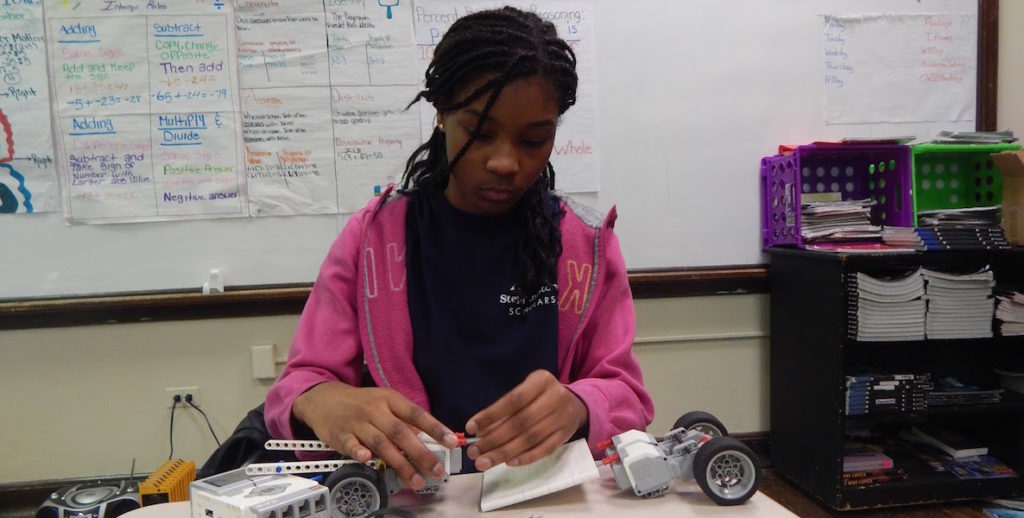There are 530,000 STEM-related jobs in the Philadelphia region with more to come over the next decade. At the same time, we have over 400,000 people living near or below the poverty line in Philadelphia. This is a city of neighborhoods, where everyone knows everyone else, mostly because the racial and economic segregation of opportunity here has created a narrow path to economic and professional prosperity. The city has a hollowed out middle class not simply because we can’t retain enough talented millennials of all backgrounds, but because we are not invested in the social mobility of a vast group of our fellow residents.
As hard as it is to admit, Philadelphians live under a gentler version of Jim Crow where education and jobs are still defined by class, racial and neighborhood lines. And just like in the Old South, our lack of commitment, investment and desire to integrate a significant portion of the population holds us all back.

The result: less pay, opportunity, and higher taxes because we are willing to tolerate and believe ourselves disconnected from 400,000 people who could transform the fortunes of this city and the entire state.
If we are going to connect over 130,000 children living in, at, or near the poverty line with at least some of those 530,000 STEM-related jobs, it will require more than simply telling students STEM is important or having them “play” STEM with coding websites, robots, or popsicle sticks.
![]()
So where do we start? What can we do?
Focus on Skill: Students will not be able to pursue anything if they do not have strong academic skills which can only be built over time. Currently at the K-8 level, the majority of the students do not meet proficiency scores on the state PSSA exams in math or literacy. Some of the schools with the highest concentrations of poverty, have worse scores in math or reading. This pattern continues in high school where only 21 percent of students are proficient in algebra. Whether students seek college or go straight to a job, they will be required to write and know math.
As hard as it is to admit, Philadelphians live under a gentler version of Jim Crow where education and jobs are still defined by class, racial and neighborhood lines. And just like in the Old South, our lack of commitment, investment and desire to integrate a significant portion of the population holds us all back.
The city is rightfully focused on the early literacy Read by 4 campaign, but we need a more long-term strategy that prioritizes both math and writing. That’s why, at Steppingstone Scholars, the educational nonprofit I run in Philly, we focus our programming not only on STEM but particularly math, by developing an integrated set of programing and curriculum that builds academic skill over time. If we want students to have better access to STEM jobs, math and writing will be essential to staying on track from kindergarten to college entry.
Build Real Pathways: STEM can be a powerful way to show students both the joy of learning and a hook to engage them to see the practical application of reading, writing and math, but we need more direct ways to show students how to get to actual jobs and careers. Steppingstone, for example, has launched programming in high poverty neighborhoods and schools to build a K-12 pipeline of in-school and out-of-school programming that focuses on academic and career enrichment. As a city, we need more than workforce development; it is thinking of careers the same way we would think about music in a school and afterschool programs. It should intertwine internship work done by groups like WorkReady (managed by the Philadelphia Youth Network) with both school work and enrichment. This integrated approach can break long-term joblessness in communities that have historically been left behind.
If we are to be a city truly focused on social mobility—creating a path to do better than your parents—we need to care enough about all of our children to make the sustained educational investment and room in the professional class for them to make the most of their talents and make a better city for all of us.
Innovation for All: If cancer patients deserve the latest groundbreaking treatment developed by Penn, and Comcast can build a skyline-defining technology center, don’t students in economically and racially segregated schools deserve the technology and teaching practices that narrow the math and science education gap? We have partnered with Penn Engineering to develop programming and curriculum around functional, 3D printable robots and a curriculum in K-8 schools that often do not have access to technology that actually improves learning. The goal for us and others should not be to simply address, but never narrow the divide. We need to use and create innovative practices and technology that actually improve the learning of students who deserve it the most.
STEM education has the potential to improve the capacity to learn, so that historically disadvantaged and underserved students can participate equally in the city’s future workforce. If we are to be a city truly focused on social mobility—creating a path to do better than your parents—we need to care enough about all of our children to make the sustained educational investment and room in the professional class for them to make the most of their talents and make a better city for all of us.
Sean Vereen, EdD, is president of Steppingstone Scholars, an educational nonprofit that provides programming and support to talented underserved students in the Philadelphia region to achieve academic success, opportunity and a college degree.

